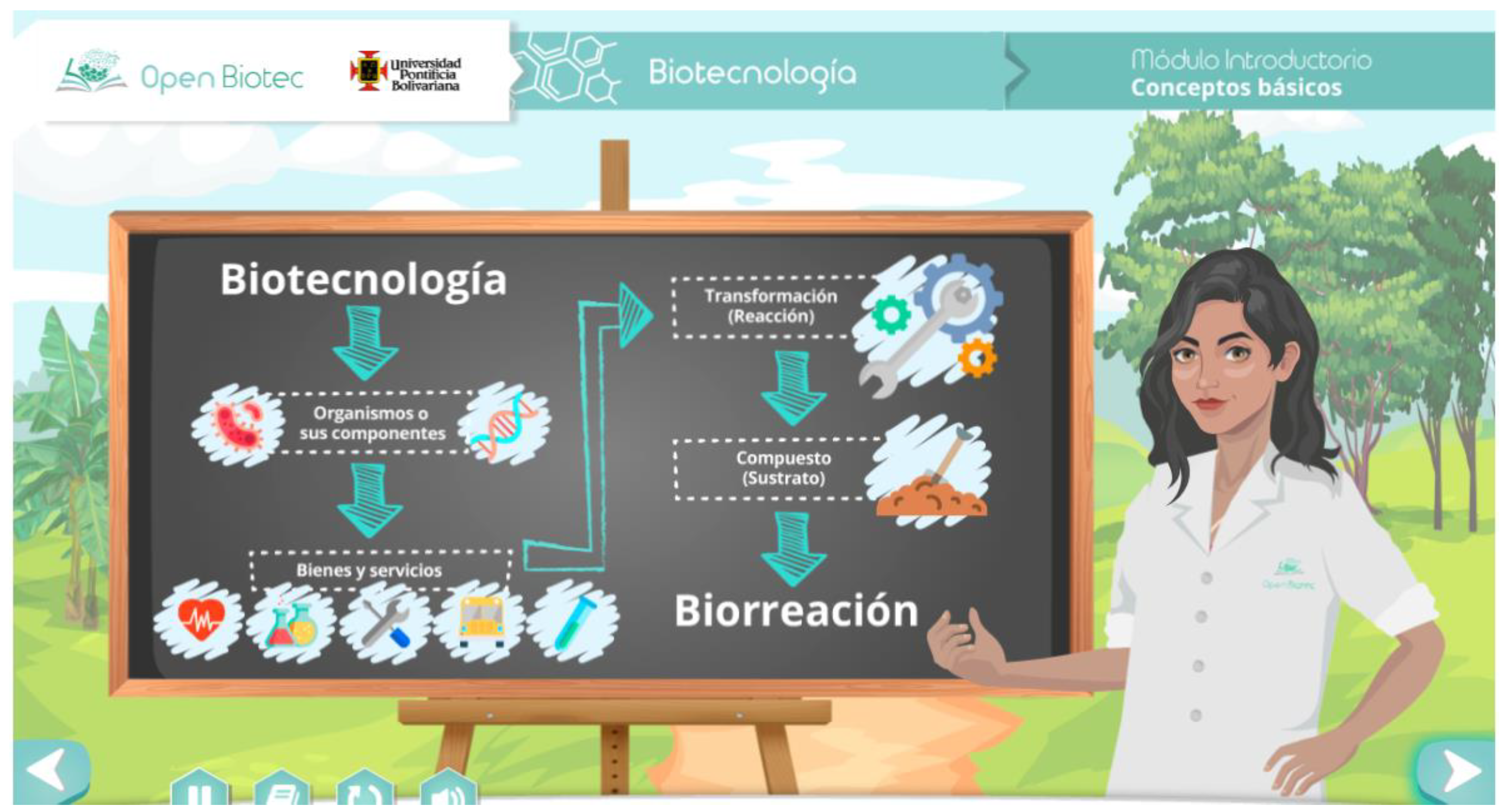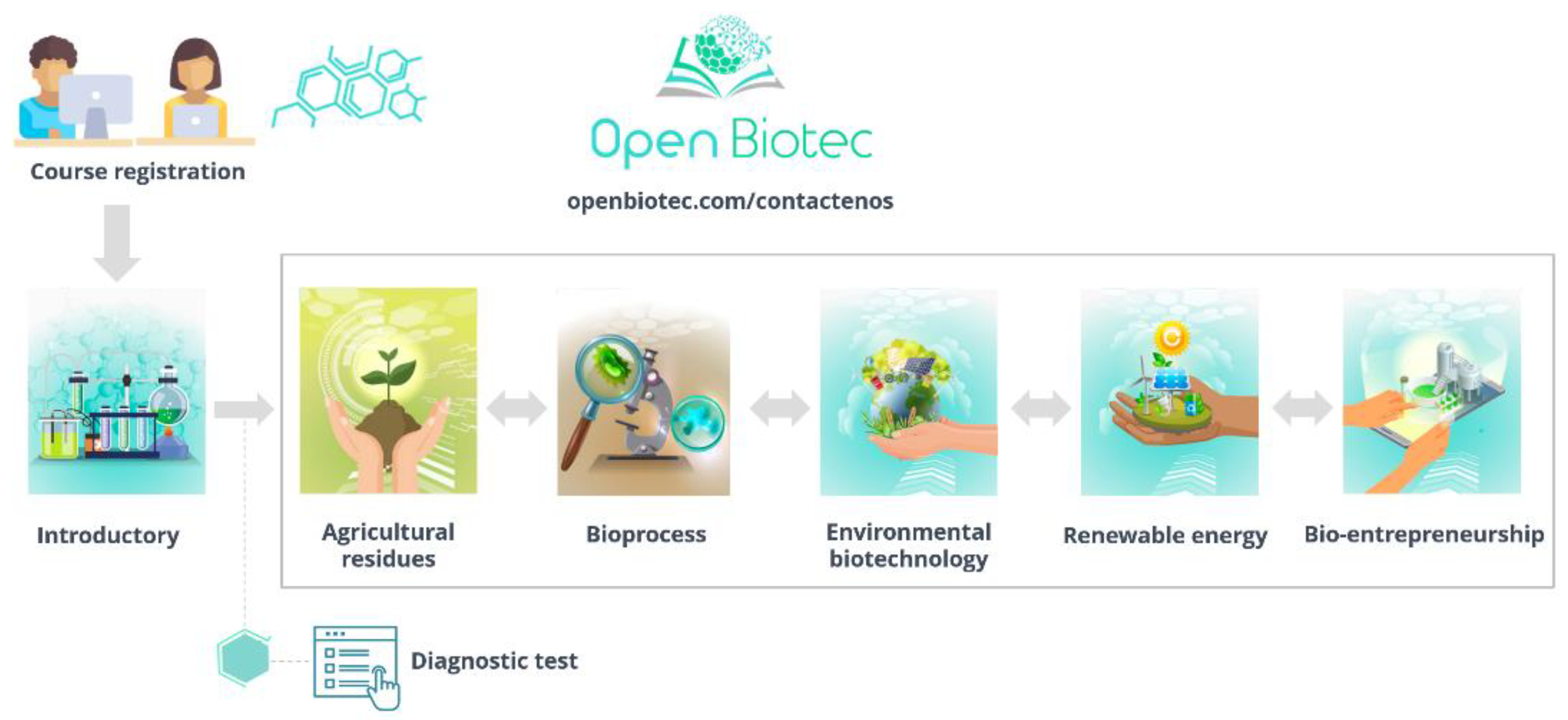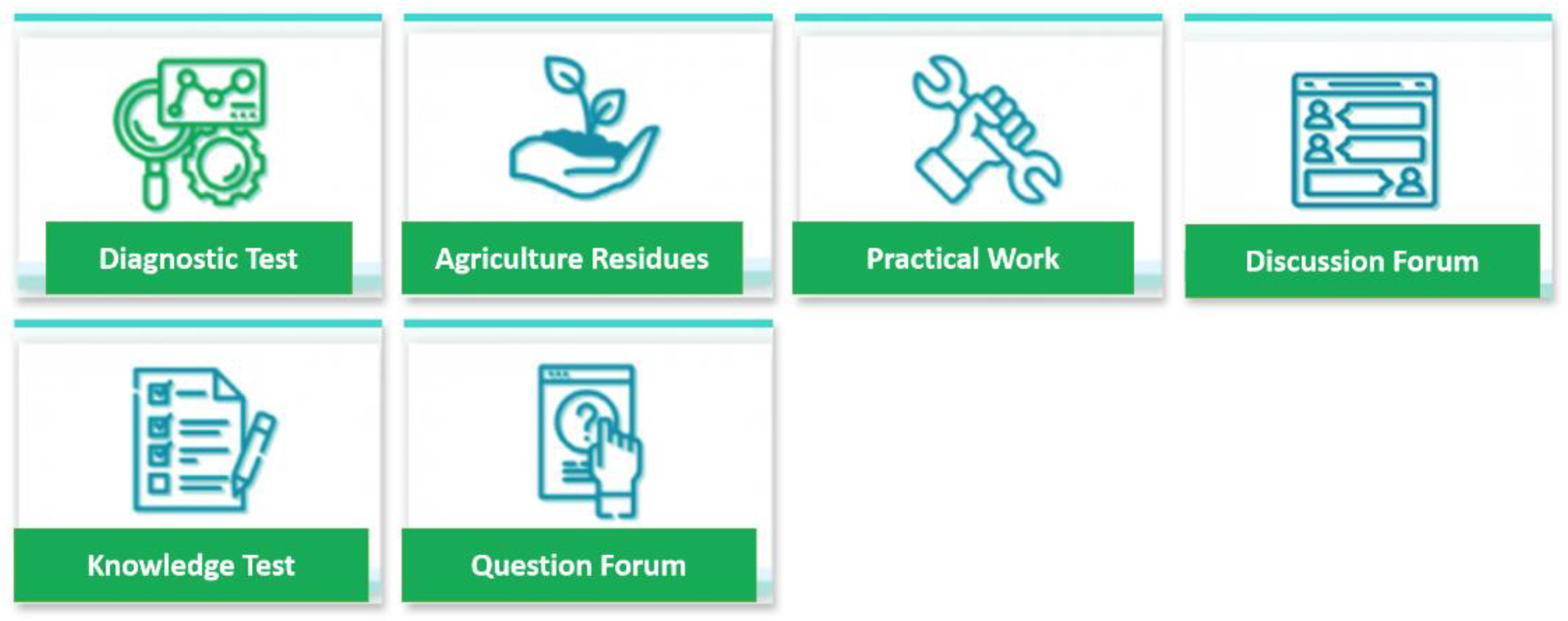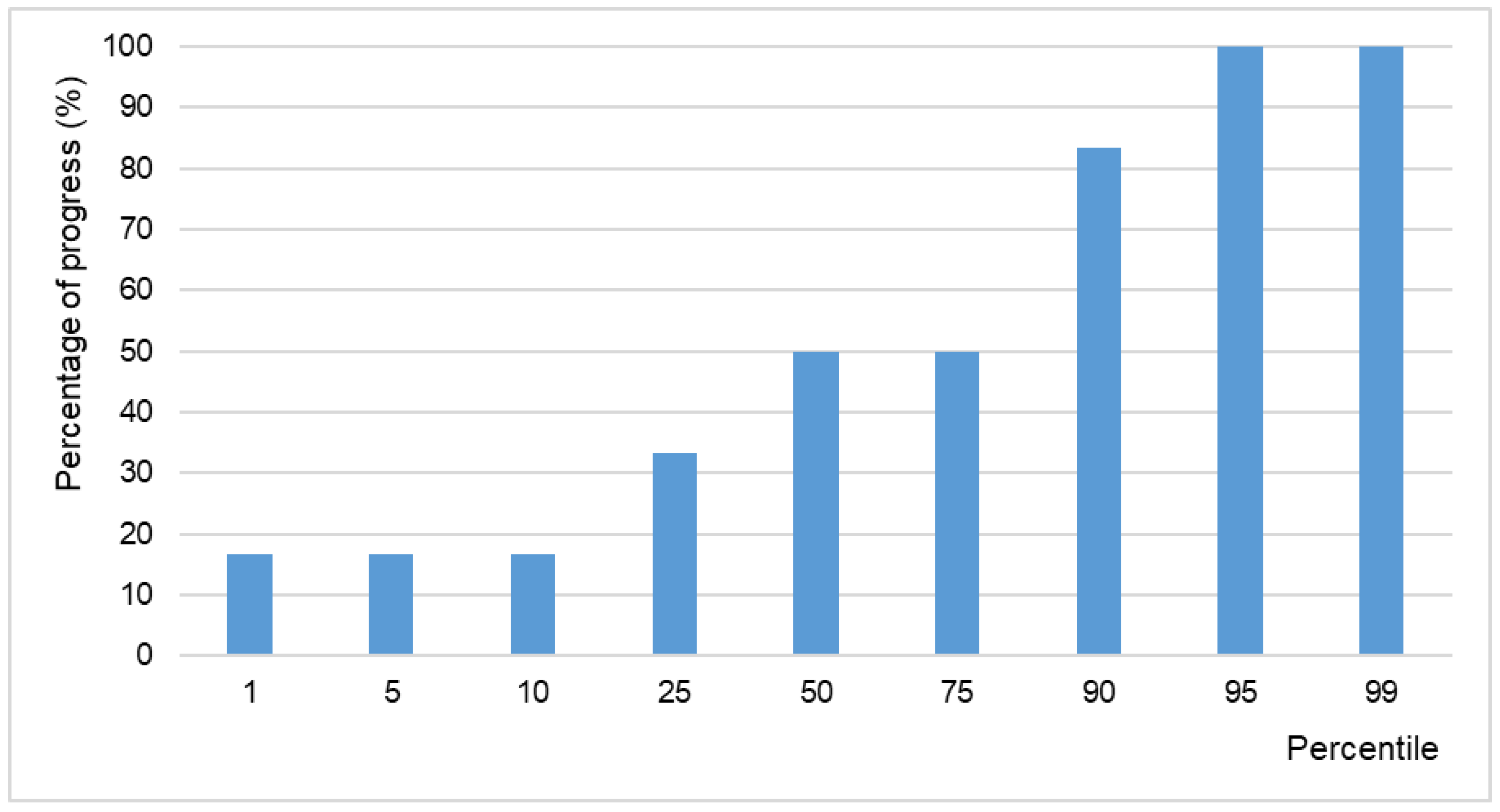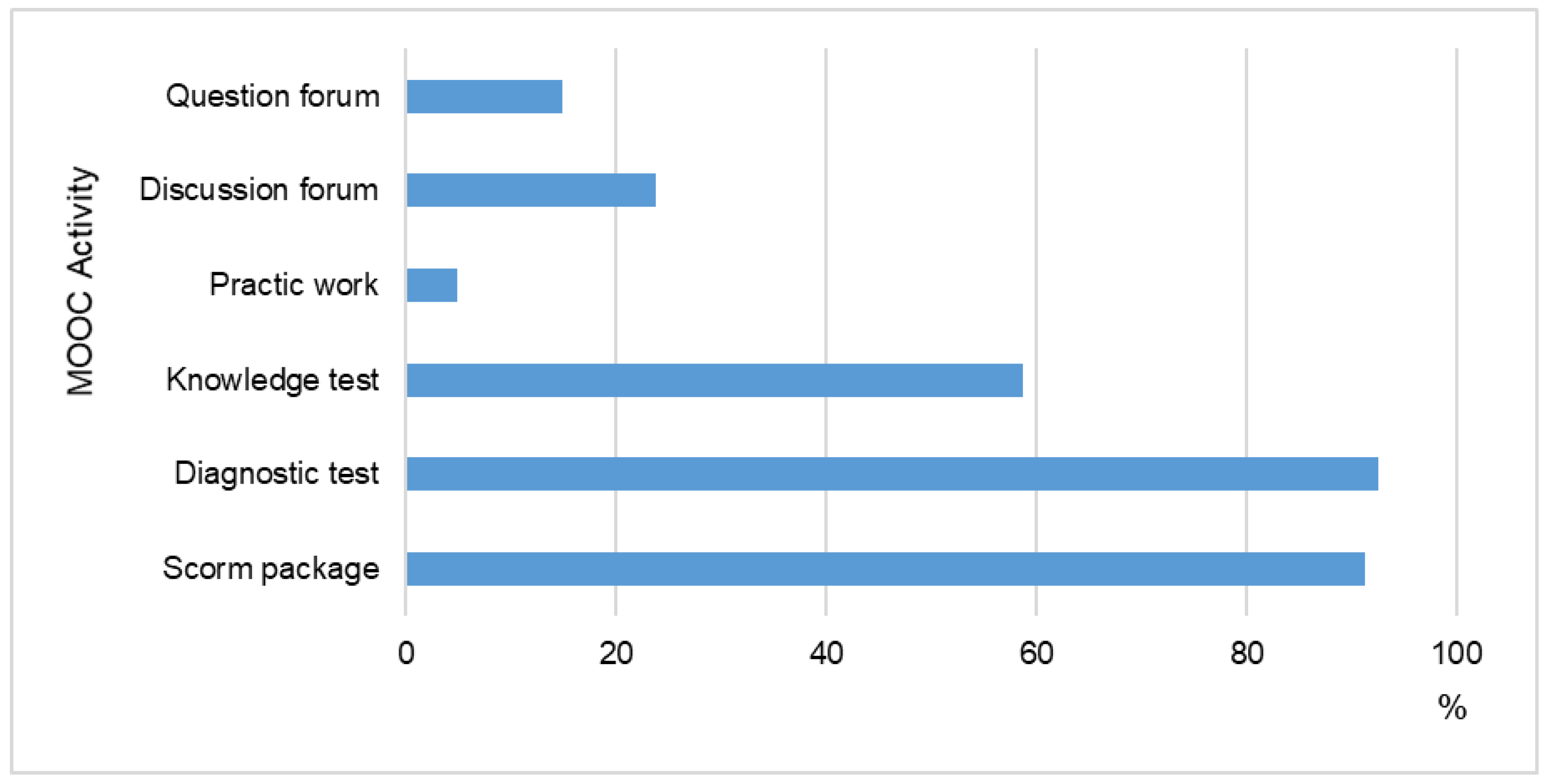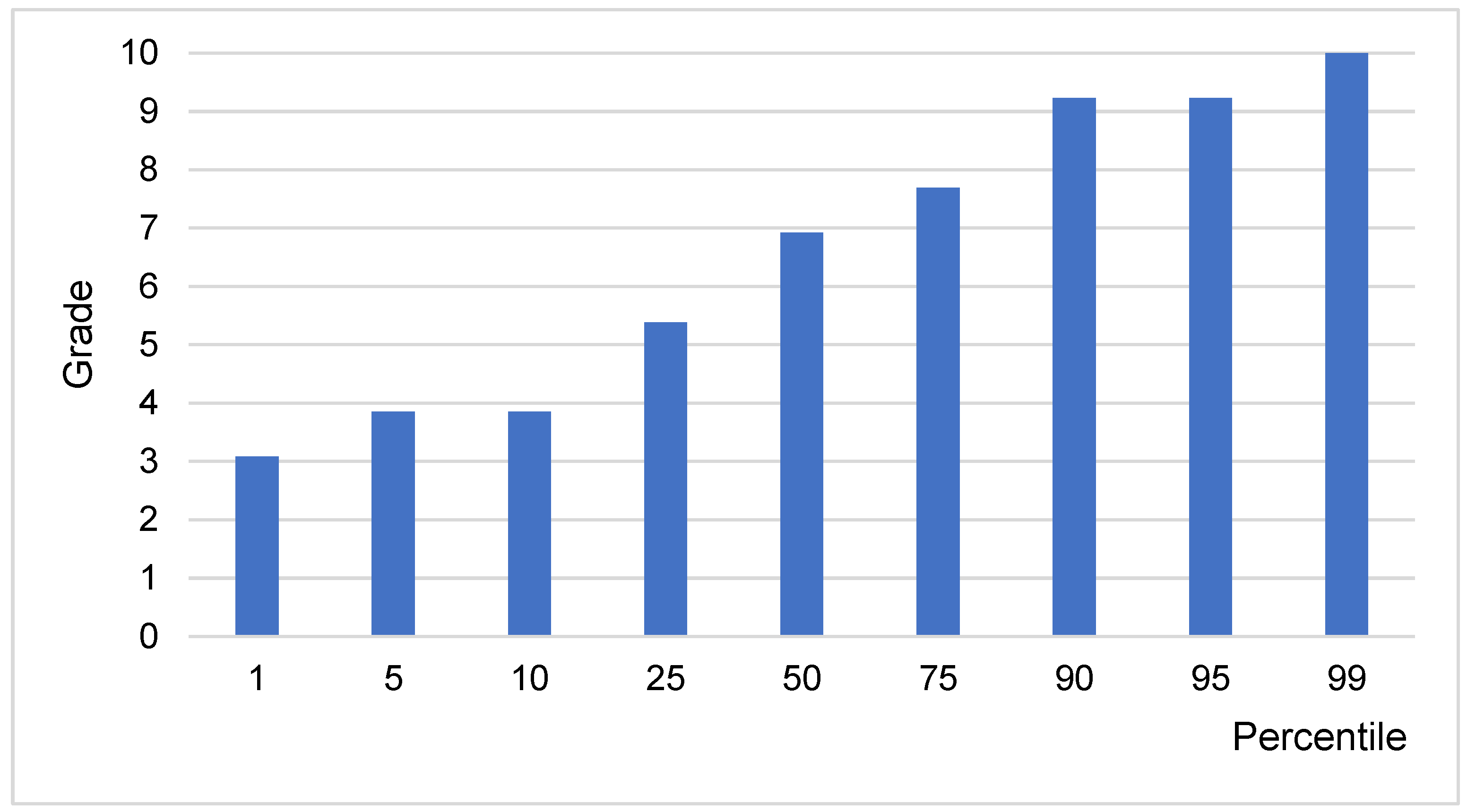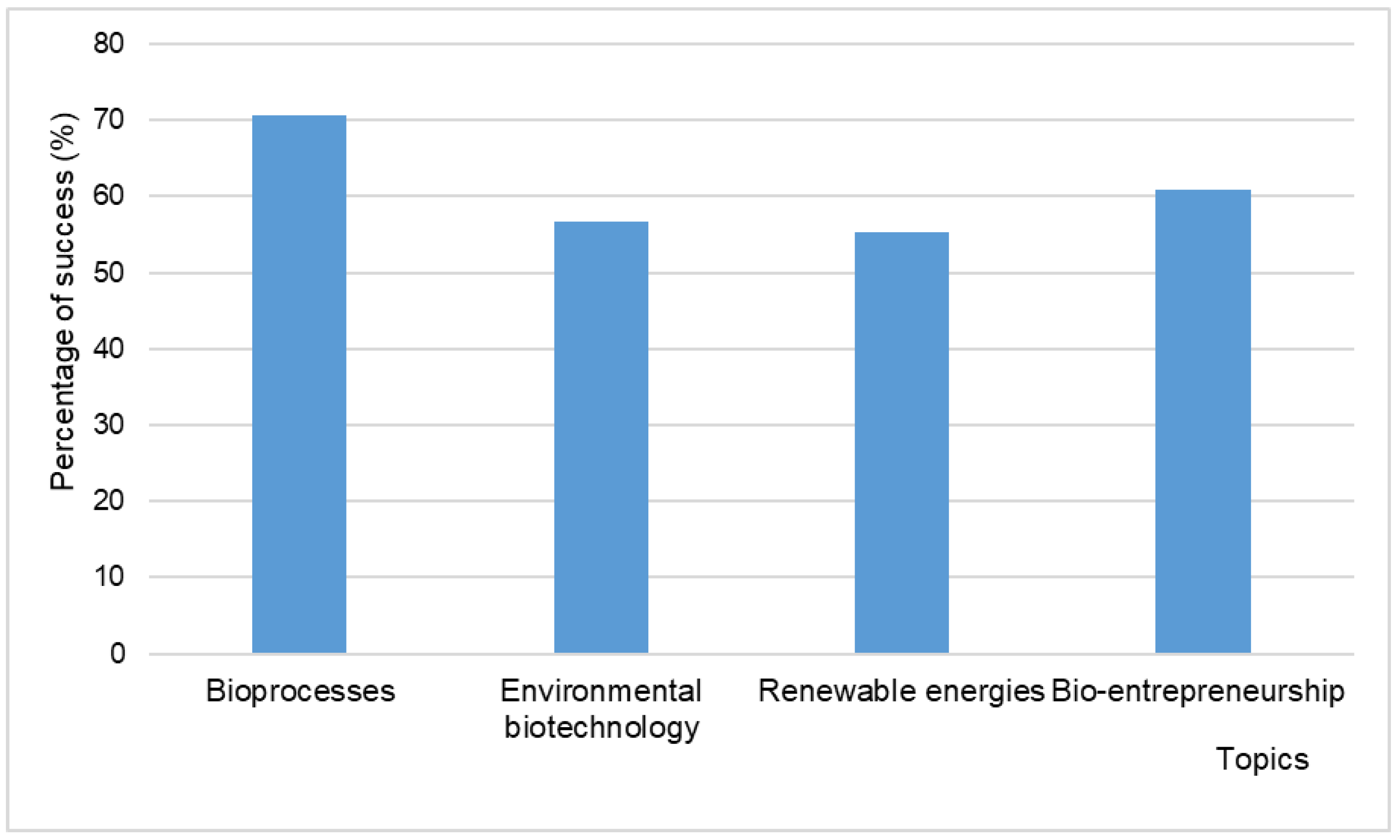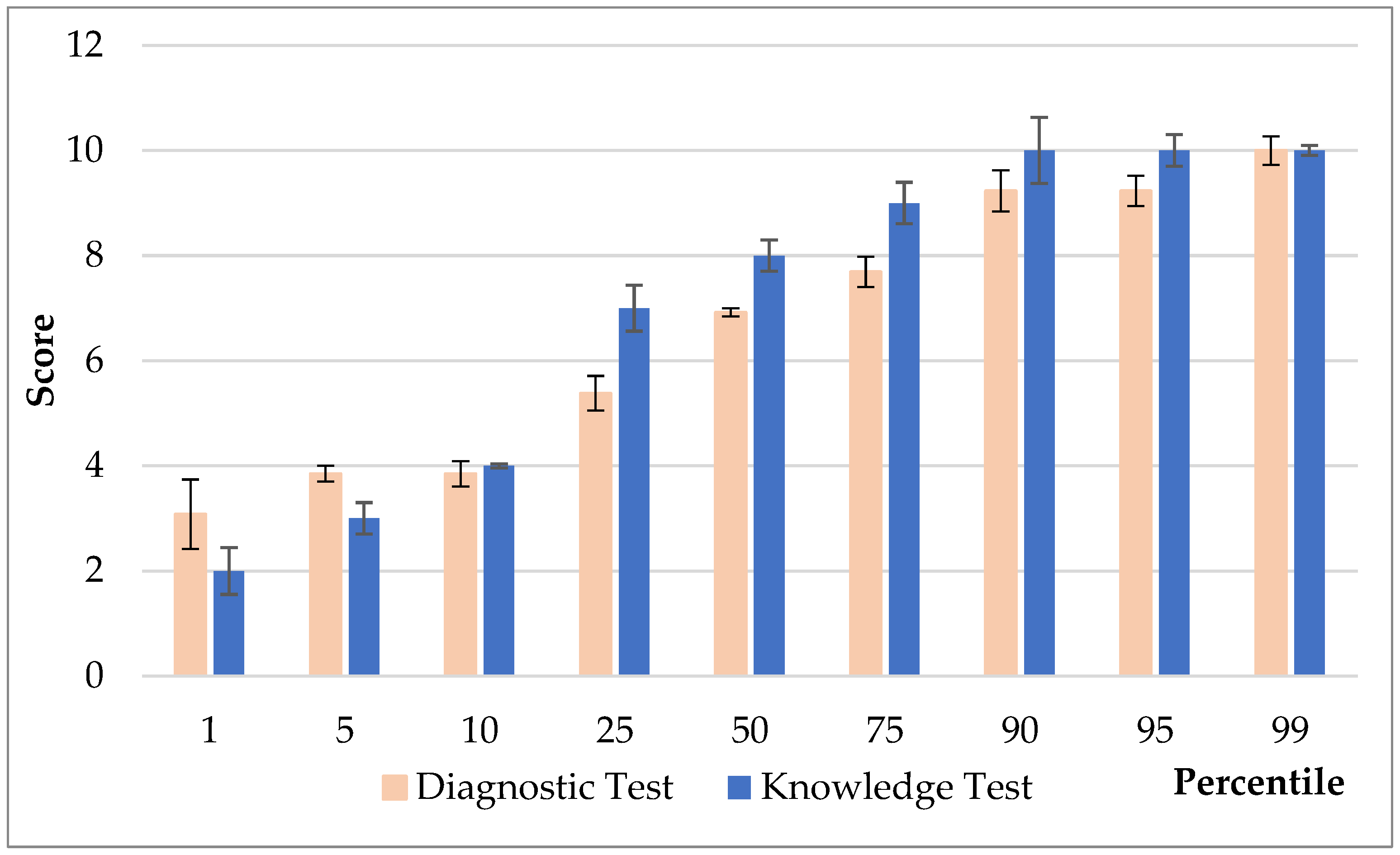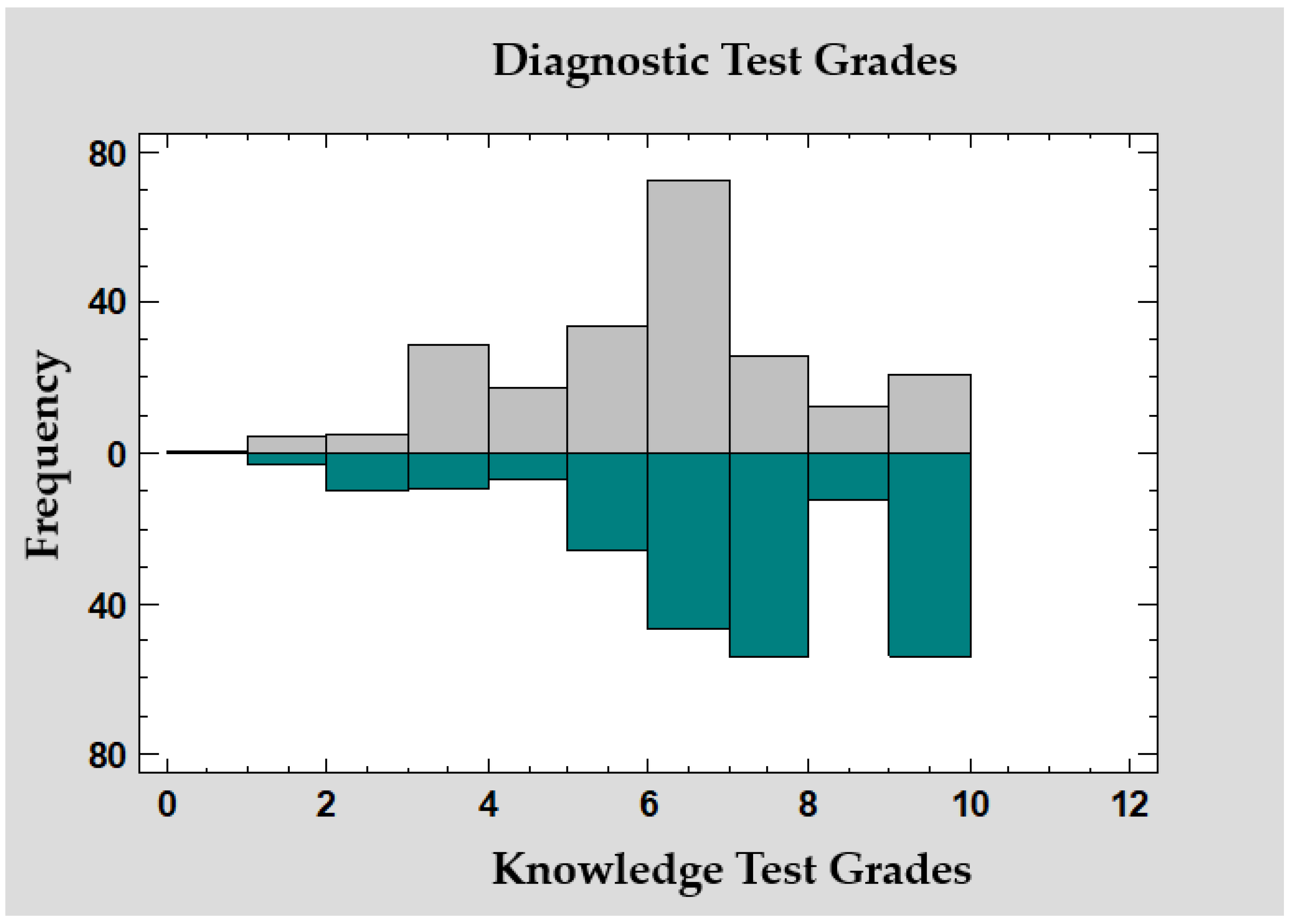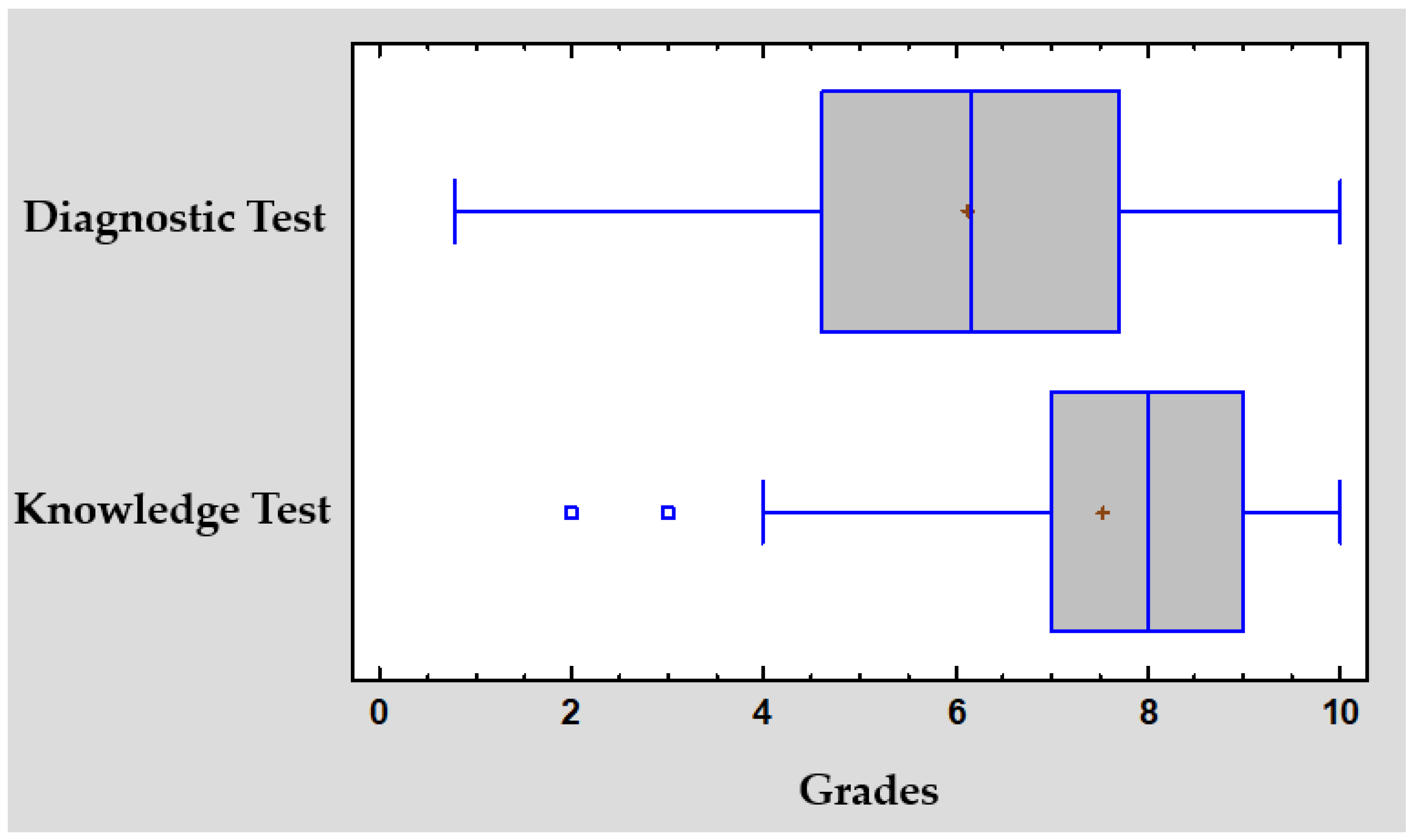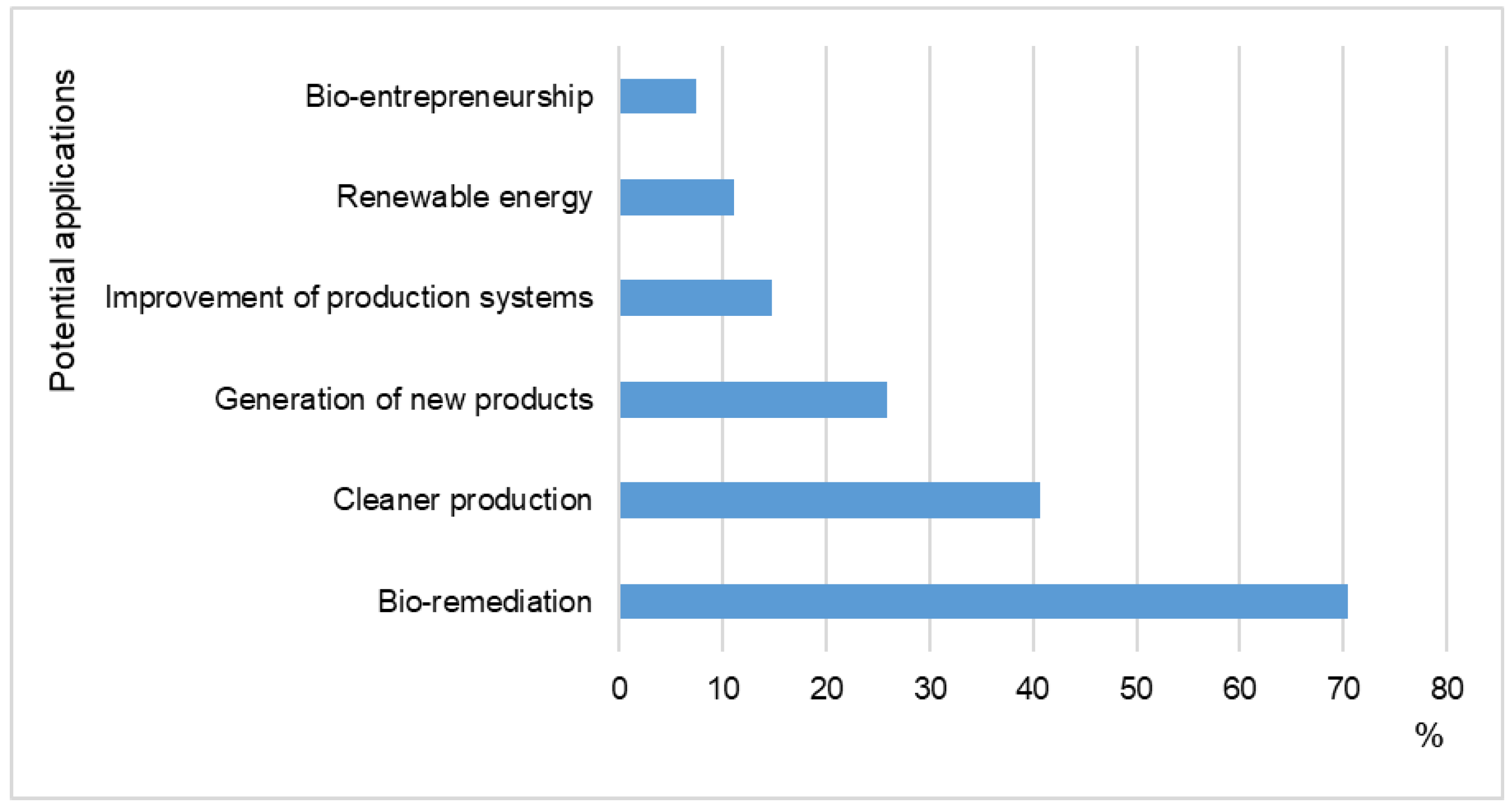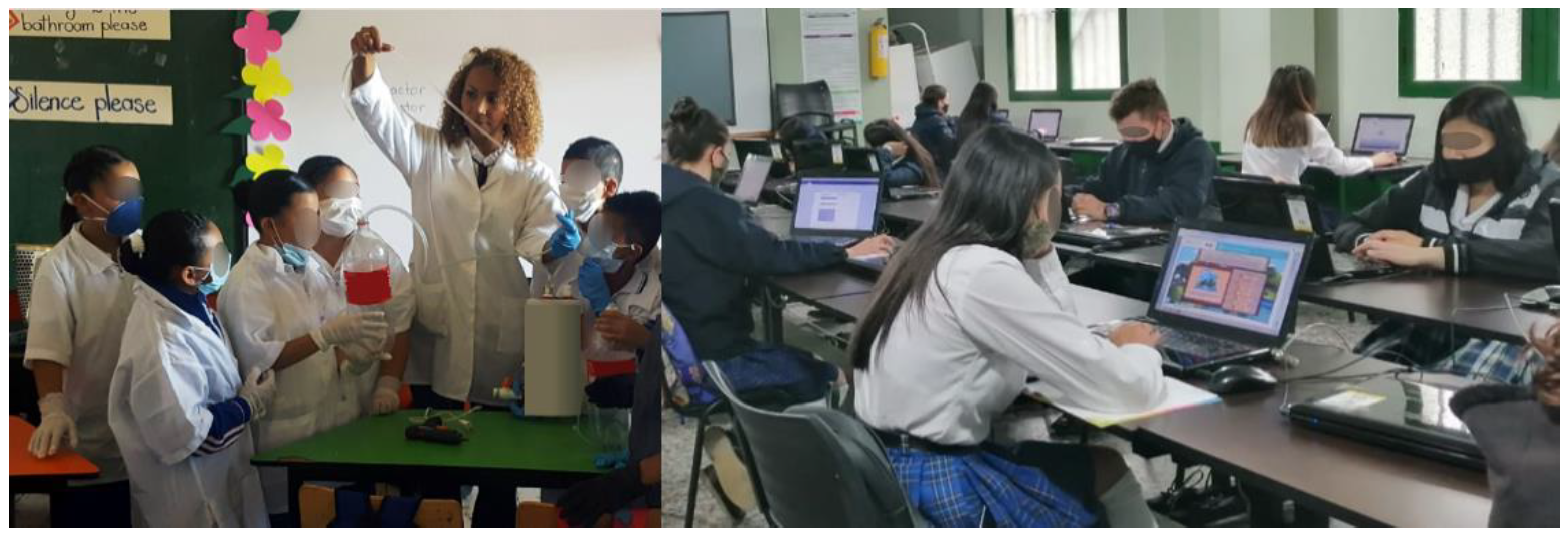1. Introduction
The term MOOC or massive open online courses was used for the first time in 2008 to describe an online course, by 2011 the MOOC was launched that would gather the main characteristics of the phenomenon, and even a platform called Udacity was developed; later, the MOOC platform called Coursera was launched. By 2012 it was considered “The year of MOOCs” [
1], and they were generalized this same year [
2]; it was even stated that the MOOC course was the most important technological innovation in education in the last two hundred years [
1].
By mid-2013, MOOCs proved that they could attract large numbers of students. The largest provider, Coursera, attracted five million and edX over 1.3 million, mainly in the US and others in the rest of the world, such as Africa and India, with 9% and 12%, respectively [
2].
In 2013, the opportunities and risks of the MOOC business model were discussed. In terms of opportunities: they favor an increasing number of students around the planet to access education for the first time, or education at a nominal level of quality for free [
3], incentivize teachers to reinvent what they do in their classrooms [
4], the possibility of benefiting students from developing countries [
5], time flexibility, among others [
1].
Regarding risk, the main problems identified are pedagogical, not technical [
1]. In addition, there is a degree of uncertainty regarding the nature surrounding MOOCs as viable businesses. While they reinvent the educational business model, their financial uncertainty remains a latent risk. MOOCs can be viewed as the equivalent of Google ads and as a potential alternative to public education in a way that reduces the costs of university education [
3].
The business model of MOOCs currently, according to the literature consulted, is given in several ways, one by the additional cost for the certificate [
1] and the second by formed partnerships with traditional educational institutions and companies. For example, Udacity partnered with AT&T and Georgia Tech to obtain a master’s degree in computer science for USD 7000 [
3]. Today, Coursera’s revenue is USD 524 million [
6].
MOOCs should now be seen as alternatives to extensions and incentives to education, not substitutes [
3]. They can offer new training modalities, provided that the necessary infrastructure conditions are in place, such as quality internet access [
4], and they are designed to ensure interpersonal interaction and support for student success [
2].
It was found in the literature that MOOC topics focus on continuing education for university teachers [
4], didactics [
1], and health care [
5], and according to a study by Gomez et al. (2022), the content areas of the courses are health and lifestyle, programming, deep machine learning, cloud computing, investment and trading, music, network security, language learning, financial accounting, arts and crafts, general health, data science, 3D animation, and game development [
7].
Although MOOCs are born and developed in large universities [
2,
4], this new modality of expanding knowledge through open, massive, online courses is mainly designed for something other than emerging topics such as biotechnology or bridging gaps between secondary and higher education.
Post-digital learning using MOOCs can be relevant for strengthening rural areas in developing countries such as Colombia. As digital technologies continue integrating into everyday life, the post-digital era recognizes the ubiquitous presence of digital technology and the new ways in which they relate and communicate [
8]. This model of education can be especially effective in rural areas where traditional access to education may be limited. By leveraging technology, rural populations in developing countries can access education and training opportunities they would not otherwise have. As such, post-digital learning can help bridge the digital divide, promoting inclusive education and socioeconomic development in rural areas.
In Latin America, rural communities have undergone different transformations in recent decades, giving rise to new social, economic, and cultural dynamics fueled by a growing rapprochement between the rural and the urban areas [
9,
10,
11].
This transformation has been accompanied by various rural development measures that aim to improve living conditions in these territories and enhance their human and infrastructure resources [
12,
13]. Despite this, not all measures have advanced at the same speed in countries like Colombia, and some of them, like higher education, have been scarce in rural areas. The populations have been characterized by social disparities resulting from armed conflict, drug trafficking, unequal access to land, corruption, and state negligence, among other factors [
14].
The most recurrent modality has been the articulation of high school with higher education and the world of work through agreements with public educational institutions where young people acquire technical labor training [
13,
15].
In addition, a high percentage of the rural population experiences dropout in high school due to factors such as economic problems (34%), the distance between school and home (28%), academic difficulties (27%), lack of interest in study (26%) and need to work (25%) [
16]. It makes many young people leave looking for education or employment while an increasingly aging population remains [
17].
These dropout rates remain suspended over time because the governmental reforms choose only to increase the education coverage in the sector. There is no aim of making people find a significant experience in training that allows them to overcome unfavorable social and economic conditions [
18].
The training deficiencies in rural human resources need to be solved. In this way, education in rural areas must be based on more than just the dissemination of content. This type of community requires effective and relevant educational innovation strategies [
19]. A potential foundation for better training can be to adapt the teaching techniques to the characteristics and needs of the target population, where ideas and concepts are moved from the virtual laboratories to the marketplace, with resulting business development [
20,
21,
22,
23].
To this end, closing the educational gap requires the creation of training opportunities with relevance and quality, the intervention of students in their communities, and the intention to strengthen unconventional areas without disengaging from cultural identity [
16]. All this, accompanied by an “in situ” and free education, with an ability to stimulate the taste for study, as specific characteristics designed to solve the dropout issue. Besides, it is necessary not to interfere with the work of each community member.
These opportunities give rise to new and innovative entrepreneurs. Recent research has shown that agricultural entrepreneurship profoundly affects the growth and survival of companies [
24].
Furthermore, business activity within the academy has become a priority due to its positive impact on regional development. The knowledge gained through the commercialization of research results and the provision of highly trained entrepreneurial human resources in regional labor markets are proof of this [
25].
However, to achieve this, the use of ICT is decisive. Besides, it is offered as an alternative to overcome the limitations that cause desertion in this type of community. Closing gaps in technology can help close gaps in education. In the modern world, software technologies developed by academic institutions and industries worldwide are revolutionizing the educational system and continually offering new tools and platforms in students’ learning experience [
26,
27].
For this, the communities must adopt technologies that allow them to solve the limitations imposed by traditional systems. Incorporate them until they become familiar with rural areas so that they transmit an ideology of proximity to the modernized world [
28].
Today, information and communication technologies (ICT) are present in all areas, allowing more and more people to interact effectively and efficiently with the surrounding environment [
9,
29]. According to this, it is possible to build virtual communities with an adequate appropriation of ICT to develop new training strategies.
Various tools that can be used to support collaborative learning in MOOCs, based on the connectivism learning theory. These tools include social media platforms, wikis, discussion forums, and peer review tools. By facilitating interaction and collaboration among learners, these tools promote a sense of community and promote knowledge construction, critical thinking, and problem-solving [
30,
31]. Overall, the use of these tools in MOOCs can enhance the learning experience and help learners to retain knowledge gained from the course [
7,
32,
33,
34].
A virtual community can be considered as a set of spontaneously constituted groups that emerge in virtuality when different people interact in time with a common cause, through which they form links in cyberspace [
35,
36,
37,
38,
39,
40,
41,
42,
43]. In the rural sector, this interaction with other sectors of society transmits media training that reduces the gap in habits, ideas, and values, among others [
9].
The rapprochement of the communities through virtual training solves economic and geographical limitations and does not interfere with the time that the population dedicates to their productive work. In addition, developing learning in virtual communities involves considerably lower distribution costs than those associated with classroom facilities, instructor time, participant travel, and work time spent attending classroom sessions [
44]. At the same time, it increases the coverage margin of education in the region, allows access at any time and place to people whose economic activities prevent them from being present, and facilitates access to current technology, providing tools to connect with the world.
Precisely, one way to strengthen cultural identity and simultaneously generate the rapprochement of rural communities through ICT tools is by using virtual training in biotechnology, a cross-disciplinary area of knowledge based on the potential of biological systems to create new products [
45]. The employment of biotechnological tools can create novel business models by applying digital technologies and generating different entrepreneurship alternatives to improve people’s lives globally [
27,
46].
Colombia is the second most megadiverse country worldwide, hosting around 10% of the fauna and flora. Since 2009, the Ministry of the Environment has developed a national biodiversity policy that guides long-term national strategies for the conservation and responsible use of natural resources. This policy contemplates that the success of the country’s sustainable development strategy will require a focus on education, promoting training, educational resources, and training programs on topics such as biotechnology and the bioeconomy [
47].
Developing countries face significant barriers to accessing biotechnologies and biotechnology-derived products as they frequently need more institutional capacities and professional competence in exercising regulatory oversight [
48]. Since the end of the 20th century, UNESCO has promoted biotechnology learning as a new topic in natural sciences, from primary education to high school [
49]. Consequently, many countries like Colombia have incorporated biotechnology learning as a long-term strategy to solve economic, environmental, and social problems [
50]. However, although many teachers are aware of the benefits of biotechnology and are interested in including it in their education systems, only some have the training or experience to incorporate it into their curricula, especially in rural areas [
49]. Besides, adopting e-learning techniques has always been challenging for these zones because teachers and students need more awareness, a low level of information and communication technology (ICT) literacy, and a lack of ICT infrastructure [
51,
52].
The democratization of knowledge through massive open online courses (MOOCs) in biotechnology for the rural sector allows teachers and students to pick and choose between several freely available options. The development of online learning platforms to visualize complex biological concepts is a promising aspect that overcomes geographic barriers and helps to learn anytime, anywhere, without the presence of an instructor [
53], which creates conditions for sustainable education.
This research aimed to develop a virtual training route in biotechnology oriented to higher education in Antioquia, Colombia, based on the curricular design of virtual learning environments in the same area. The main aim was to consolidate an open and massive educational platform for teaching biotechnology in the Department of Antioquia. The research also aimed to contribute to developing scientific competencies that allowed for mitigating environmental impacts in the communities and increased the coverage of quality programs.
This research paper presents an innovative approach to post-digital learning of biotechnology in rural areas of Colombia. The study utilized a socioeconomic diagnosis of a subregion of the department of Antioquia and the creation of MOOCs using the Action Research methodology. The paper contributes to developing sustainable learning communities with participation and collaborative action mediated by virtual tools. The paper highlights the importance of virtual, accessible, and open education in increasing the coverage of quality programs and mitigating environmental impacts in rural communities.
One of the hypotheses of this study states that the design of a virtual course in biotechnology and the platform learning experience increase the degree of knowledge of students from rural areas in aspects related to this topic, and one of its main objectives is to stimulate knowledge application in solving socioeconomic and environmental problems in the region.
3. Results and Discussion
3.1. Diagnosis in Pilot Communities
The Urabá region is the second-largest market in the department of Antioquia, having a population of 693,868 inhabitants, which accounts for 10.49% of the total inhabitants of the department [
58]. Around 40% of this population pertains to the rural sector, where the young population represents 58.1% of the subregion (
Table 2).
The communities exhibit an index of Unsatisfied Basic Needs (UBN) of 80.91% on average for the region. Around 62.29% of the population cannot pay for health coverage, which shows the scarcity of their living conditions [
60]. Furthermore, in the past decade, the region presented the highest number of massive displacements (20.2%) due to conflict, violence, and public order [
60].
In these communities, only 47% of young people between 11 and 16 have access to high school, while 16.2% of the population between 17 and 24 access technical or undergraduate programs [
59]. In addition to this, rural unemployment in the region is about 34% and rises to 45% for people between 16 and 29 [
58]. This value is the highest in the country, mainly due to a lack of access to higher education and job opportunities.
Due to this, several testimonies from the members of these communities indicate that the youth of Urabá show little motivation to stay in the region and are attracted to move to urban centers in search of job opportunities.
Close these educational gaps requires training opportunities with relevance and quality, the intervention of students in their communities, and the intention to strengthen unconventional areas without disengaging from cultural identity [
16]. All of this is accompanied by an “in situ” and free education, with an ability to stimulate the taste for study, as specific characteristics designed to solve the dropout issue. Besides, it is important not to interfere with the work of each member of the community.
Precisely, closing gaps in technology can help close gaps in education. For this, these communities must adopt technologies that allow them to solve the different limitations imposed by traditional systems. Incorporate them until they become familiar with rural areas, in such a way that they transmit an ideology of proximity to the modernized world [
28].
Today, information and communication technologies (ICT) are present in all areas, allowing more and more people to interact effectively with their surroundings [
9,
29]. However, the success of ICT initiatives needs to be ensured to make it a sustainable mode of learning [
61]. According to this, it is possible to build virtual communities with an adequate appropriation of ICT to develop new training strategies [
62].
At the same time, biotechnology provides tools and research capabilities to face the challenges of technological development in a country like Colombia. Hence, it can reduce the impact of hazardous pollutants in the water, soil, and air matrices. At the same time, it promotes the synthesis of innovative products with added value to the market.
The combination of biotechnology and ICT can create communities with training to reduce poverty levels, improve living conditions, and strengthen food safety in rural areas. Through the virtual learning process, it is possible to solve economic and geographical limitations and not interfere with the time that the population dedicates to their productive work.
In addition, developing biotechnological learning in virtual communities involves considerably lower distribution costs than those associated with classroom facilities, instructor time, participant travel, and work time spent attending classroom sessions [
63]. At the same time, it can increase the coverage margin of education in the region, allow access at any time and place to people whose economic activities prevent them from being present, and facilitate access to current technology, providing tools to connect with the world. Besides, as Crawford et al. stated, sustainability in education has acquired a fundamental role over the years, understood as developing educational practices that can be scaled or right-sized without unreasonable exhaustion of resources or the exclusion of some populations [
64].
For this reason, it was created a learning platform in biotechnology from the diagnosis made to the pilot community. This platform denominated Open Biotec comprises five massive open online courses (MOOCs), which offer new learning opportunities through the web and for free.
3.2. MOOCs Description
Open Biotec is expected to be a regional platform for virtual learning on biotechnology in a didactic environment with a simple language and open to all audiences. The user platform works under the WordPress system, and it communicates functionally with a Moodle platform for the hosting of the five MOOCs that comprise this route. The courses consist of four modules based on biotechnology and one corresponding to the topic of renewable energy.
Figure 1 provides an impression of the introductory lesson in
Open Biotec.
All of them aimed at generating skills that allow the application of green processes in their environments, as shown in
Table 3.
Figure 2 shows the characteristics of the
Open Biotec MOOC courses and the user experience. The students are registered in the platform and begin an introductory module followed by a diagnostic test to assess their general knowledge in biotechnology, renewable energy, and bio-entrepreneurship, then they follow the five MOOCs created.
Upon access to every course, the student finds the offer of activities that make up the instructional material, as described in
Figure 3. The student begins with the Diagnostic Test, which corresponds to a questionnaire of 10 multiple-choice questions aimed at identifying the prior knowledge that the student has regarding the topics of the course.
Then, the user accesses the Scorm Package, where, with the help of two avatars, the different themes of each course are explained interactively. There, it is possible to download additional information and access it through links to other web pages to complement the information. In case of doubts, there is a first forum (Question Forum) where the student can consult about the topics that have not been clear to receive feedback from the MOOC teacher.
Subsequently, each course has a Practical Work, where the user experiences what has been learned. This activity is designed to be carried out with resources the student can easily find in their rural environment. The activity requires the documentation of the results through photographic images and videos the student can take with their mobile phone and upload to the platform.
In addition to the experimental activity, the user must participate in a Discussion Forum and a Knowledge Test. In the Discussion Forum, the teacher presents a question to be answered or a case study to be analyzed. Each student must participate by giving answers, arguing their point of view, and interacting with the other-student answers.
To finish, a Knowledge Test is accessed where the learning received through the instructional material is evaluated. The activity consists of a questionnaire of 10 multiple-choice questions. At the end of the questionnaire, the platform delivers the results, accompanied by feedback for each question.
3.3. Contribution of MOOCs to Closing Social Gaps and Economic Challenges
Table 4 introduces the purposes of the different MOOCs and the socioeconomic facts associated with the courses coming from the previous diagnosis. It represents the alienation between the course’s purposes and the respective socioeconomic fact.
The platform offers an introductory module for students to level their knowledge and learn basic biotechnological concepts. Then, a course on agricultural residues where the student can identify and take advantage of all the biomass resulting from agricultural production systems. Colombia is a country with a vocation for agriculture, where more than 4 million rural workers, corresponding to 17% of the country’s labor force oversee agricultural production systems [
68].
Colombia has around 5,200,000 hectares destined for the sowing of crops. Its generation of agricultural residues represents high volumes that become environmental problems by not being used [
69]. The course was designed to offer all this population the fundamentals and methodologies to value and transform waste, from biotechnological processes, into products with high added value.
As mentioned above, the Urabá subregion has an eminently primary economy, mainly directed towards agriculture. It has a participation of 24.67% of the total added value of the agricultural sector in the department [
58]. There is a potential for residual agricultural biomass that is quite promising to be transformed into valuable products. With biotechnology applied in agriculture, the communities can access a wide variety of scientific approaches to improve their production systems to develop solutions to rural productivity and sustainability [
70].
For this reason, a formation course called Bioprocesses was designed to achieve these transformations. The MOOC presents the central concepts of biological processes and illustrates the equipment and techniques required for the biological production of interesting substances. In Colombia, many wastes are not used efficiently. This is due to the lack of knowledge about the appropriate methods for their preparation, characterization, and transformation, with sufficient quality and safety [
71].
In emerging economies and a megadiversity of natural resources, microorganisms such as fungi, bacteria, and yeasts, are used in biological processes to provide enhanced value to raw materials. This fact creates relevant market niches and boosts these economies [
72].
The Urabá subregion is composed of different bioregions with a diversity of coastal ecosystems, continental biological corridors, and biological wealth associated with rivers, swamps, and tropical forests. This environment makes it a source of opportunities for bio-entrepreneurship.
Additionally, the MOOC on Environmental Biotechnology empowers the students to identify the potential of biotechnology for the bioremediation of contaminated water and soil, especially in rural areas.
One of the premises of sustainable rural development is to solve, mitigate or prevent environmental problems [
73]. The community should conserve natural resources for present and future generations. Environmental biotechnology, also identified as bioremediation, applies microorganisms, fungi, plants, or the enzymes derived from them, for the attenuation, reduction, or elimination of the harmful effects caused by environmental pollutants in a given site [
73,
74].
In the Urabá subregion, domestic wastewater treatment systems are not enough to cover 100% of the population’s discharges [
75]. Besides, the increase in agricultural and industrial activities represents impacts at an ecological level on the health of living beings and human communities.
In turn, a Renewable Energies MOOC leads the student towards the potential of alternative energies to develop different processes efficiently and innovatively, making the most of natural resources. With the courses on Agricultural Residues and Bioprocesses, students acquire the tools to visualize biomass as a raw material to produce alternative energy.
The biomass composition of agricultural wastes has large amounts of carbon, oxygen, and hydrogen, which can participate in exothermic reactions that generate energy, to supply up to 35% of primary energy consumption in developing countries [
76].
Finally, the Bio-entrepreneurship MOOC teaches the design process for launching and managing new businesses based on biotechnology. The students acquire skills to create value proposals and communicate business models.
In many developing countries, the biotechnology industry is led by small and medium-sized companies capable of implementing innovation and high-technology projects in the sector [
77]. Bio-entrepreneurship and bio-economy understood as a technology-based business directly or indirectly linked to biotechnological tools, allows the target community to convert all the knowledge received into value proposals that promote the development of its members [
78,
79]. The bioeconomy provides potential for regional development, as the bioresources are widely distributed in rural and remote areas where alternative sources of livelihood are usually scarce [
80].
These courses combine the basic understanding of biotechnology and bio- entrepreneurship with their application in the local environment of the community and can be developed without a strict sequential order. In other words, the different community members have an important and assorted academic offering where they can adopt a pick-and-choose strategy because they have different learning needs [
45].
Nowadays, there are virtual education tools for agricultural waste management training. The Virtual University Environment and Sustainable Development (UVED), in France, developed an open and distance learning (ODL) curriculum named “Agronomic and environmental impacts of organic residues recycling in agriculture. Application to The South” [
81]. This course provides learners with a comprehensive approach to organic matter recycling. The students gain capacities in the measurement and analytical methods at field and laboratory levels according to the specificities of The South, especially the dry tropical climate.
Also, there are several tools for virtual training in biotechnology-related areas, most of them have been directed toward the simulation of biotechnological processes. Goh & Sze report the use of virtual education platforms based on artificial intelligence as a tool for advancing biotechnology through facilitating adaptive learning and helping make meaningful links within knowledge networks [
45]. Meanwhile, in India, the Sakshat Amrita virtual biotechnology lab project allows to virtualize the wet-lab techniques and integrate the learning experience. The virtual lab has added a new dimension to the regular teaching courses at the University [
82].
Researchers from the University of Waikato, New Zealand, developed a virtual bioprocess engineering laboratory [
83]. They found that by conducting the virtual bioprocess engineering laboratory, students gained a deeper understanding of fermentation principles, laboratory safety rules, experiment design, and analysis of data in comparison with physical laboratories [
83], like the objectives proposed in
Open Biotec.
On the other hand, Kumar et al. report various studies that bring real process plants to the university setting with the help of virtual reality technology [
84]. Interfaces based on spherical imagery of a real operating plant that was integrated with interactive learning activities; a desktop-based virtual reality interface with a browser-based 360-degree panoramic view, process flow diagram, and a 3D map of the milk powder plant; or a virtual immersive crude distillation unit (CDU) for undergraduate classroom education are some examples [
84].
3.4. Relationship between the MOOCs and the Development Strategy of Biotechnology in the Region
Colombia, and the rest of the South American region, have declared a strong interest in increasing educational coverage, especially in STEM areas, after the ranking obtained in the 2018 PISA tests. According to recent results, the country has demonstrated the need for a profound change in the educational model that meets the challenges of a knowledge-based economy. That is why this generation requires to adopt the concepts of biotechnology in the teaching processes and prepare to develop development models based on the bioeconomy [
85].
Colombia seeks to become a world leader in biotechnology by 2025 and offer solutions to local, regional, and global issues [
86]. In contrast, a biotechnological literacy, like that proposed in the MOOCs of the
Open Biotec platform, will imply that elementary, secondary, and high education populations are updated with easily accessible sources and have the tools to understand these fundamentals in the proper context.
For its part, in the Colombian educational system, there are curricular guidelines for Natural Sciences and Environmental Education [
87], Basic Competency Standards [
88], and Basic Learning Rights [
89] that contemplate the development of scientific capacities. In students from elementary to secondary school, a set of structuring learning that students must learn in each of the grades of school education while allowing teachers to develop curricular proposals according to the existing needs in the current context [
90].
This fact explains how the contents of the
Open Biotec MOOCs in biotechnology were defined in coherence with the learning declared by the Ministry of National Education [
89]. According to this, a student must argue based on evidence about the effects that some human activities have on the country’s biodiversity and explain the uses of biotechnology and its effects in different contexts. Also, it is necessary to understand the importance of obtaining clean energy from several organic wastes, analyze current environmental issues from a systemic perspective, and propose the application of biotechnological techniques as a bio-entrepreneurship strategy.
For this reason, it is necessary to train teachers and adapt natural science curricula and instructional practices following the socioeconomic changes introduced by recent scientific and technological advances [
91]. Thus, biotechnology can be used as a pedagogical strategy for teachers and students in the teaching-learning process of natural sciences. The strategy can be developed through methodologies based on research models and mini-projects for the education system in rural communities [
92].
However, to achieve this, the use of ICT is decisive. A virtual training route in biotechnology is offered as an alternative to overcome the limitations that cause desertion in this type of community. Nowadays, software technologies developed by academic institutions around the world are revolutionizing the educational system and continually offering new tools and platforms for the learning experience for students [
27,
82]. The main findings of a pilot test for this training route are presented below.
3.4.1. Students’ Participation in Open Biotec
During the first year after the launch of the platform, the participation of the students enrolled in the different courses was monitored by collecting their Key Performance Indicators (KPIs), as the number of students registered on the platform, number of sessions performed per user, and the average duration of each session.
In this period, 918 students signed up for the platform, participating in an average of 10.86 sessions per user with an average duration of 48.7 min. The training route stipulates a duration of 24 h per course, for a total duration of 120 h.
Table 5 states the distribution of the estimated duration of each learning activity in the
Open Biotec MOOCs.
The average MOOCs dropout rate was estimated as 73.3% considering that students are free to take the
Open Biotec courses gradually, selecting a course order according to their interests. This dropout percentage is lower than the obtained in several MOOCs which is greater than 90%. In 2019, a study performed by the Massachusetts Institute of Technology revealed that over the past five years, online courses recorded an average dropout rate of about 96% [
93].
The student’s participation in the tests and forums adds up to 4 h (16%), while the development of the training activity (Scorm Package) is about 5 h (21%). The Practical Work totals 15 h due to it includes several experimental activities with biological processes; these activities are not reflected in the KPIs collected on the platform due to it represents autonomous activities for the students.
For the paper, the progress of student participation in the Agricultural Residues MOOC was determined. It was the selected course to be analyzed because it was the first MOOC students finished on the platform.
Figure 4 shows the percentile distribution of the students’ progress during the course in terms of their participation in the different learning activities of the educational material.
The percentile distribution graph is a graphical representation of how data values are distributed across a range of percentiles. Percentiles divide a dataset into 100 equal parts, with each part representing 1% of the data. In this percentile distribution graph, the
x-axis represents the range of percentiles from 0 to 100, and the
y-axis represents the percentage of students’ progress.
Figure 4 allows to quickly see how the data is distributed, including the minimum and maximum values, the mean, and any outliers or concentrations of data.
The students presented average progress of 49.4% in the employ of the educational material. 50% of them carried out more than three learning activities and 10% of users with progress above 83%. Only 10% were below 16%, with only one completed activity.
On the other hand,
Figure 5 shows the percentage of student participation in the different activities offered by the Agricultural Residues MOOC. More than 90% of the students who participated in the course evaluated their prior knowledge in topics related to biotechnology, renewable energy, and bio-entrepreneurship or renewable materials of biological origin.
In turn, 93% of the students participated in the training activity (Scorm Package) related to the Agricultural Residues course. The concept of biomass is deeply studied, its origins in our environment, and how this material is becoming an option for transformation into value-added products through biotechnological processes.
While doing the training, the students execute didactic exercises when they apply the fundamentals received. After the training activity, 58.5% of the students completed a knowledge test. There, they evaluate their learning about the use of biomass from their farms as a substrate, the importance of the C/N ratio (carbon-nitrogen), and different cases of successful value-added products.
The participation through interaction in the question and discussion forums for this course was low, with 15 and 23%, respectively. This response could be due to the shyness and introversion characteristic of rural population members. There may be a preference for individual activities rather than creating argumentation. On the other hand, this can also be associated with a generalized behavior characteristic of users of this type of platform, as reported by Nielsen [
94]. Most of all registered users of an online platform do not frequently participate, and the course completion rate is often under 10% in MOOCs [
95,
96].
The forum participation allows identifying users with a drop-in behavior, defined as those students who selectively interact with the course activities and develop practical work [
97].
3.4.2. Tracking the Learning Process
At the beginning of the biotechnology route, the learning process was monitored by a basic diagnostic test. It allows a comparative analysis of student skills before the biotechnology training.
The internal consistency of diagnostic and knowledge tests were assessed using the Cronbach’s alpha coefficient with five experts using the following five criteria, as suggested by [
98]: Number of questions in tests (C1); Clarity in the formulation of questions (C2); Coherence between the questions and the course objectives (C3); Level of relevance of the questions in the tests (C4); Overall degree of difficulty for the tests (C5). The results are shown in
Table 6.
The Cronbach’s alpha value was estimated as 0.82 indicates an acceptable level of reliability for both diagnostic and knowledge tests in the residues MOOC. Both tests are independent and allow to differentiate the performance of the students in the course in an objective way.
Figure 6 shows the percentile distribution of the students’ grades during the assessment.
The students presented an average grade of 6.13 in a range of 0 to 10. 50% of them presented values above 7, and 10% with grades above 9. Only 10% were below 4.
According to the topics evaluated, the questions related to bioprocesses presented 70.7% of correct answers (
Figure 7), while bio-entrepreneurship was 60.81%, 56.6% for environmental biotechnology, and 55.3% for renewable energies.
Although secondary school students generally have confused or inadequate ideas about the concept of biotechnology [
50], this diagnosis test shows that users have some prior knowledge about biotechnological issues due to their training in rural education.
In the same way,
Figure 8 shows the distribution in percentiles of the students’ grades during the knowledge test after the training activity and its comparison with the grades obtained during the Diagnostic Test. The students presented an average grade of 7.59 in a range of 0 to 10. In this case, the response after the training activity was higher. While only 50% of the users presented values above 7 at the diagnostic, more than 75% achieved it during the knowledge Test.
Table 7 shows the statistical summary for the scores obtained in both the diagnostic test and the knowledge test for 262 students which completed the MOOC to assess whether the differences between the statistics of the two samples are statistically significant.
The bias and standardized kurtosis are used to compare whether the samples come from normal distributions. Both standardized kurtoses are within the expected range between −2 and 2. In particular, the kurtosis obtained in the knowledge test data at the end of the course is greater than that of the diagnostic test, indicating greater homogeneity in the students’ results, as shown in
Figure 9.
A review of these frequency histograms shows that the distribution of scores in the knowledge test exhibits a negative asymmetry, which suggests that students have improved in their knowledge of the MOOC studied.
The box-and-whisker diagram for the students’ grades in the Diagnostic and Knowledge Tests is shown in
Figure 10. There is evidence of a greater dispersion of the grades in the diagnostic test than in the knowledge test.
The t-test was performed to compare the means of the two test grades. Confidence intervals were estimated for each mean and the difference between them. The confidence intervals for the mean of the diagnostic test grades were 6.13171 ± 0.257165, and for the mean of the knowledge test, it was 7.53153 ± 0.26622. The confidence intervals for the mean difference, assuming equal variances, were −1.39982 ± 0.369128. The confidence interval for the difference between the means extends from −1.76895 to −1.03069 and does not contain the value 0, which demonstrates there is a statistically significant difference between the scores of both tests with a confidence level of 95%. The calculated p-value was 0.00001 which is less than 0.05, confirming statistical significance.
The effect size for the diagnostic and knowledge tests was 0.72 which is considered between medium and large according to Cohen’s index [
99].
The results for the one-way ANOVA are shown in
Table 8.
A one-way ANOVA was performed to evaluate whether there is any evidence that the means of the populations differ before and after the learning experience offered by Open Biotec. The Tukey multiple comparison test, like both the t-test and ANOVA, assumes that the data from the different groups come from populations where the observations have a normal distribution.
According to
Table 6, one-way ANOVA revealed that there was a statistically significant difference between at least two groups (F(1, 442) = 55.54819,
p = 0.00001). Tukey’s HSD Test for multiple comparisons found that the mean value of the student grades was significantly different between diagnostic and knowledge tests
The Mann-Whitney W test was performed to compare the medians of the grades. It obtained a p-value of 0.00001, a statistically significant difference between the medians at the 95.0% confidence level. According to the previous statistical analysis, the learning experience designed in the Open Biotec MOOC increases the degree of knowledge of students in this field of biotechnology.
It is important to specify that the topics addressed in the knowledge test are much deeper than those corresponding to the diagnostic. The results indicate that one out of every two students who participated in the exercise evidenced good assimilation of the topics. The students showed improvement relative to their baseline state and noted significant improvement in knowledge, understanding, and higher-order thinking levels. They got the fundamentals to achieve the adequate identification, characterization, and selection of the residues present on their farms and their visualization as a potential substrate for subsequent transformations.
The knowledge acquired through the platform and then evidenced through the knowledge test allowed students to visualize the importance of biotechnology as a tool to solve the problems of their region.
3.4.3. Biotechnology Implementation in the Region
Through the discussion forum of the introductory course, the perception of the students regarding the potential applications of biotechnological processes in their communities was determined.
Figure 11 presents the percentage share of the responses to the question: “How do you think biotechnology could serve in your region to improve environmental, productive, or economic conditions?”.
Around 70% of the students see biotechnology as a tool to mitigate the environmental damage present in their region through bioremediation activities. The students are concerned about the risk situation of the ecosystems in their zone. The Urabá subregion is characterized by its high population growth and insufficient coverage for the treatment of domestic waste [
75]. In addition, the region has an intensive agricultural production system, where the use of high volumes of pesticides and agrochemicals represents a constant threat to the natural resources of the area.
On the other hand, around 40% of users associated biotechnology with the possibility of replacing conventional forms of production with cleaner alternatives, which promote the conservation of natural resources. There is awareness of the impacts caused by economic activities and other human actions on the natural environment and the need to access alternative and more environmentally friendly technologies.
To a lesser extent, students find biotechnology a potential tool for the development of new products (25%), the improvement of the agricultural production system (15%), the generation of renewable energies (11%), and the development of Bio-entrepreneurship (8%).
With these results, the impact of training in biotechnology concerning students’ attitudes towards the problems of their region begins to be evidenced. Biological sciences learning is increasing their frontiers of knowledge at a high rate, offering more options for developing meaningful innovations in the environmental, agricultural, and industrial biotechnology sectors [
100]. The sustainable use of natural resources, exploitation of native raw materials, reduction of pollution, and generation of alternative energy sources and sustainable forms of production are some of them [
101]. Similar experiences have been reported from Bandung, Indonesia [
102]. Students between the ages of 9 to 11 participated in a bio-based learning program, where they received training about urban farming, environmental awareness, and social responsibility.
The outcome demonstrates that the communication approach of bio-based experiential learning activities provides children with valuable education on environmentally friendly business, particularly in biotechnology for the environment, to foster sustainable communities [
103].
MOOCs are valued very positively due to their culture of participation and acquisition of professional skills, leading to their projection and transfer of learning mainly to the world of work. As MOOCs continue to evolve and improve, they offer an increasingly solid model of education, fostering social learning and the collective creation of knowledge, empowering students, and providing the possibility of establishing professional relationships in the future [
8].
However, it is important to note that the number of responses obtained in the discussion forum was very small compared to the total number of students, which is a limitation of the study.
Despite this limitation, the study provides valuable insights into the potential applications of biotechnology in rural communities, and highlights the need for further research in this area. Future studies could explore the effectiveness of different methods for engaging students in discussions about biotechnology, and could also investigate the impact of biotechnology training on the economic and environmental conditions of rural communities. Ultimately, the findings of this study support the use of MOOCs as a means of promoting sustainable development in rural areas through the dissemination of knowledge and the creation of learning communities.
Action research methodology, used in this study, involves a cycle of planning, action, observation, and reflection to address a specific problem or issue. In the context of connectivism learning theory, action research can be used to investigate how learners acquire and apply knowledge in a digital age, and how technology can enhance the learning process [
38,
39,
40,
41].
3.4.4. Meaningful Experiences Developed through Open Biotec
Inside the
Open Biotec initiative, users who are pioneers in biotechnology training stand out. Several teachers from rural educational institutions disseminate biotechnology to the most remote communities of the department of Antioquia. These teachers have recognized the importance of a learning process that links knowledge, experiences, and methodologies to develop entrepreneurial skills in face-to-face spaces, adapted to the community’s needs [
104].
The
Open Biotec platform allowed the establishment of a post-digital learning community mediated by ICT, in which the appropriation of new teaching and learning technologies is evident.
Figure 12 shows meaningful experiences developed through
Open Biotec with rural communities of Antioquia.
They also consider how knowledge must materialize gradually to the physical space where to be applied. In that case, they have turned the training process into successful experiences involving the community in productive projects. With the realization of the Practical Work of each MOOC, the students apply the knowledge received in the resolution of different problems in their community, for example, the identification of agro-industrial residues to produce biogas as an energy source to cook. Some students used the lessons learned in the MOOC to implement a prototype for wastewater treatment in a sanitary landfill near the municipal school. In 2020, a student from La Ceja (Antioquia) decided to initiate entrepreneurship with coffee and local fruits to produce an innovative yogurt, using the knowledge learned in Open Biotec in the bioprocess MOOC. Gradually, the evidence shows how MOOCs improve the quality of life of their members.
The main limitation of this study was a lack of access to the internet and end devices such as computers during the pilot test. However, the Ministry of Information and Communication Technologies (ICT) of the Government of Colombia has a project to create 977 “Digital Centers” (spaces equipped with free wireless internet) in different rural areas of the department of Antioquia. Free internet access is expected to increase for these communities. The solution to this limitation will depend on the lasting commitment of the local government to maintain an optimal ICT infrastructure.
Below we introduce the testimonials of three teachers from the department of Antioquia about their experiences spreading biotechnology in their communities.
Experience 1. Biogas production from organic wastes. “In our institution, we use biotechnology as a solution to the environmental problems in our community. We formulated a project to produce biogas from pig manure as a didactic case study. Pig manure is a bulky residue in our community and is responsible for many environmental problems. So, we decided to develop a biodigester technology to teach science classes to students in the 4th and 5th grades of elementary school. The students learn in an integrated way: geometry, microbiology, physics (gas production and handling), environmental science, and chemistry. Currently, we extend the project to the entire community, where parents and other teachers participate. This significant pedagogical experience has transcended the classroom. The parents are now aware of the importance of biotechnology to generate renewable energy at a low cost and decided to replicate these biodigesters in their farms”.
Experience 2. Bioremediation of soil and wastewater. “Our project initiates from an environmental problem in our institution. For a few years, we have been working with solid waste. We decided to go further to the final disposal in the sanitary landfill, where leachate and gases are generated. Bio and phytoremediation processes of the leachates, which are highly polluting, were started to give effective treatment to these liquids before they were discharged into water sources. The 11th-grade students participate in this initiative, where they receive training in biotechnology. They use plant species obtained from our environment, finding in them the ability to decontaminate wastewater. Besides, we work with microalgae, fungi, and bacteria for bioremediation. Through this activity, the students are solving a real problem in our environment, treating polluted waters that generate negative impacts on water sources and ecosystems, affecting flora and fauna”.
Experience 3. Yogurt production. “Our project was born as an opportunity to bring biotechnological knowledge to our classroom. There, students carry out the lactic fermentation process, with which they produce yogurt using fruit species from the region. High school students, parents, and other teachers participate in this initiative. This project allows us, in the first place, to develop standards and the Basic Learning Rights (BLRs) through the application of microorganisms in daily life, biological processes, and the formulation and development of research projects in the classroom. Besides, we want them to be able to execute entrepreneurial projects later. This exercise has allowed them to develop scientific, argumentative, and proposition competencies by taking advantage of the resources of the environment and developing an idea that could become a project of life in the future”.
From the testimonials, the trainers demonstrate the implementation of a project-based or problem-based learning methodology, which promotes the interaction of students with their environment to solve real problems [
105].
People of a certain rural community share particular characteristics, such as feasts and celebrations, history and traditions, family relations, and experiences relating to leisure time activities [
106]. Through this linkage, also knowledge and expertise can be shared.
The trained teachers involve students from rural educational institutions using biotechnology as a tool to transform their community. The development of a research project that directly addresses their needs engages students in a participatory process and increases their motivation [
107]. Its use as a learning tool provides them with project management, proactivity, communication, and cooperation capabilities [
105].
In turn, the student’s interaction with the other community members favors knowledge transfer [
108]. By using problem-based learning, the students become trainers of their project partners. Besides, obtaining successful results in the project execution validates the knowledge transfer and motivates the inclusion of new members in the training route.
The above results are consistent with previous research on the effectiveness of MOOCs for post-digital learning. For example, a study by Liyanagunawardena et al. (2013) found that MOOCs can provide access to education for learners who cannot attend traditional classrooms [
109]. Another study by Jordan (2014) found that MOOCs can promote lifelong learning and professional development [
110].
Using platforms such as
Open Biotec offers an opportunity to establish sustainable learning communities, with participation and collaborative action mediated by virtual tools [
111]. There, its members achieve the ability to design and implement solutions to the problems posed by everyday life. At the same time, they become the trainers of the other community members.
Furthermore, the findings were consistent with the connectivism learning theory, which emphasizes the importance of networks, connections, and collaboration in learning [
54,
55]. Participants in the program were able to connect with experts and peers from around the world, expanding their knowledge and building new relationships. These connections also helped break down the isolation many rural communities experience, fostering a sense of community and collaboration.
Based on our findings, we recommend that educational programs for rural development should be designed with the following principles in mind: incorporate technology and digital learning to increase access to education; emphasize the importance of networks and connections in learning; foster collaboration and community-building; focus on practical, hands-on learning experiences relevant to the local context; and provide opportunities for entrepreneurship and innovation. Finally, it is essential to conduct a thorough needs assessment to identify the learning needs of the target audience.
